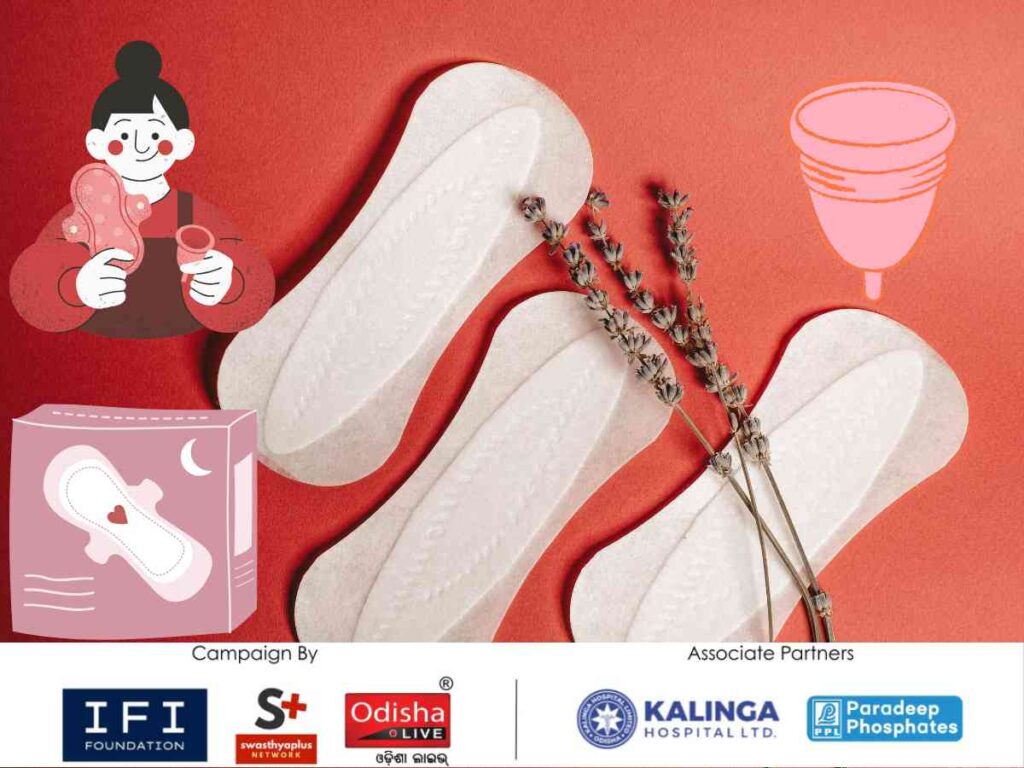When it comes to addressing the availability , menstrual hygiene products are medical necessities, but, unfortunately, on a global scale, millions of girls & women still struggle to afford the period products of their choice
Vidhika Kohli

Understanding Menstrual Health and Hygiene can be a little confusing, especially when it comes to figuring out which period products to use.
Most menstrual health and hygiene problems revolve around improper sanitary absorbents and a lack of knowledge behind the problems that can arise from using such sanitary materials. That is why, understanding various period products such as the types, the uses and the availability is very important.
To ensure proper reproductive & menstrual health and hygiene there are a wide range of different period products available for use such as sanitary pads / napkins (disposable and reusable cloth pads), tampons, menstrual cups and period panties.
And all girls and women should be able to have access to and the ability to afford the period products of their choice in a truly period friendly world.
But what is each of these products?
Well firstly, we have sanitary pads, which are of two types: Disposable and Reusable Cloth Pads.
Also known as sanitary napkins or menstrual pads, disposable sanitary pads are thin pieces of absorbent material which are worn by being attached to the inside of underwear. They absorb menstrual flow and isolate menstrual fluids from the body. As a good hygiene practice sanitary pads should be changed every few hours irrespective of how light the flow is. In case of heavy period flow, it is suggested to change sanitary pads more frequently.
Reusable pads are an alternative to disposal ones. They are made from a range of natural or synthetic materials. They are worn similarly to disposable sanitary pads and absorb menstrual flow in the same way. Reusable pads can be reused up to 60 times and must be washed and dried after every use with laundry soap, clean water as well as access to private drying spaces.
Secondly, tampons are, much like sanitary pads, made with either absorbent cotton, rayon, or a blend of both materials, but, unlike sanitary pads, tampons are inserted into the vaginal opening during menstruation. Wearing and removing a tampon, typically, should not hurt and as a good hygiene practice, it is suggested to change tampons every 4 to 8 hours, not to wear them for more than 8 hours at a time, and to use the lowest-absorbency tampon needed.
The next period product, the menstrual cup, is also inserted into the vagina. Shaped like a bell and made of flexible, medical grade silicon menstrual cups collect menstrual fluid instead of absorbing it. A reusable menstrual cup can be used for up to 6-12 hours. After every use the menstrual cup needs to be emptied, rinsed and then re-inserted. After each cycle the cup should be sanitized and boiled for up to 5-10 minutes.
Menstrual cups generally produce less waste than other menstrual products as they can be used for 5 to 10 years.
Period panties or period underwear are designed to look and fit just like regular underwear but made of highly absorbent fabrics to soak up menstrual blood. Most reusable period panties are machine washable but can come with separate instructions. It is best to follow attached product directions to figure out the best way to clean. Much like menstrual cups, period panties have also been seen as a more sustainable period product.
When it comes to addressing the availability, menstrual hygiene products, such as sanitary pads or tampons are medical necessities, but, unfortunately, on a global scale, millions of girls and women still struggle to afford the period products of their choice.
Stripped of their access to the products they need, millions have had to resort to makeshift sanitation products such as cloth, tissue paper or just wearing plain underwear but such practices lead to several health issues including, but not limited to, vaginal and urinary tract infections, severe reproductive health issues and toxic shock syndrome.
In Odisha, according to a 2022 study, about 61% respondents used only sanitary pads at home as a menstrual absorbent material, while 31.6% used only cloth and 7.2% used both sanitary pads and cloth. Most of the women and girls said that they used cloths during menarche due to lack of availability of pads and due to advice from their mothers. However, girls later switched to pads when they learnt about it from the school based- KHUSHI programme.
‘The Khushi Scheme’ which was launched in 2018 by the Government of Odisha provides free sanitary napkins to schoolgirls in Odisha from classes 6th-12th with the aim of promoting health and hygiene among school-going girls while also aiming for less girls dropping-out of schools.
And schemes such as ‘Khushi’ have helped many young girls in switching to safer menstrual health and hygiene practices during their period.
As we approach Menstrual Hygiene Day 2025, to ensure proper access to the period products of their choice let us continue to spread awareness on the matter, stay informed and keep working towards a Period Friendly World.
ALSO READ: ‘Let’s Talk Periods’ A Campaign by IFI Foundation

























